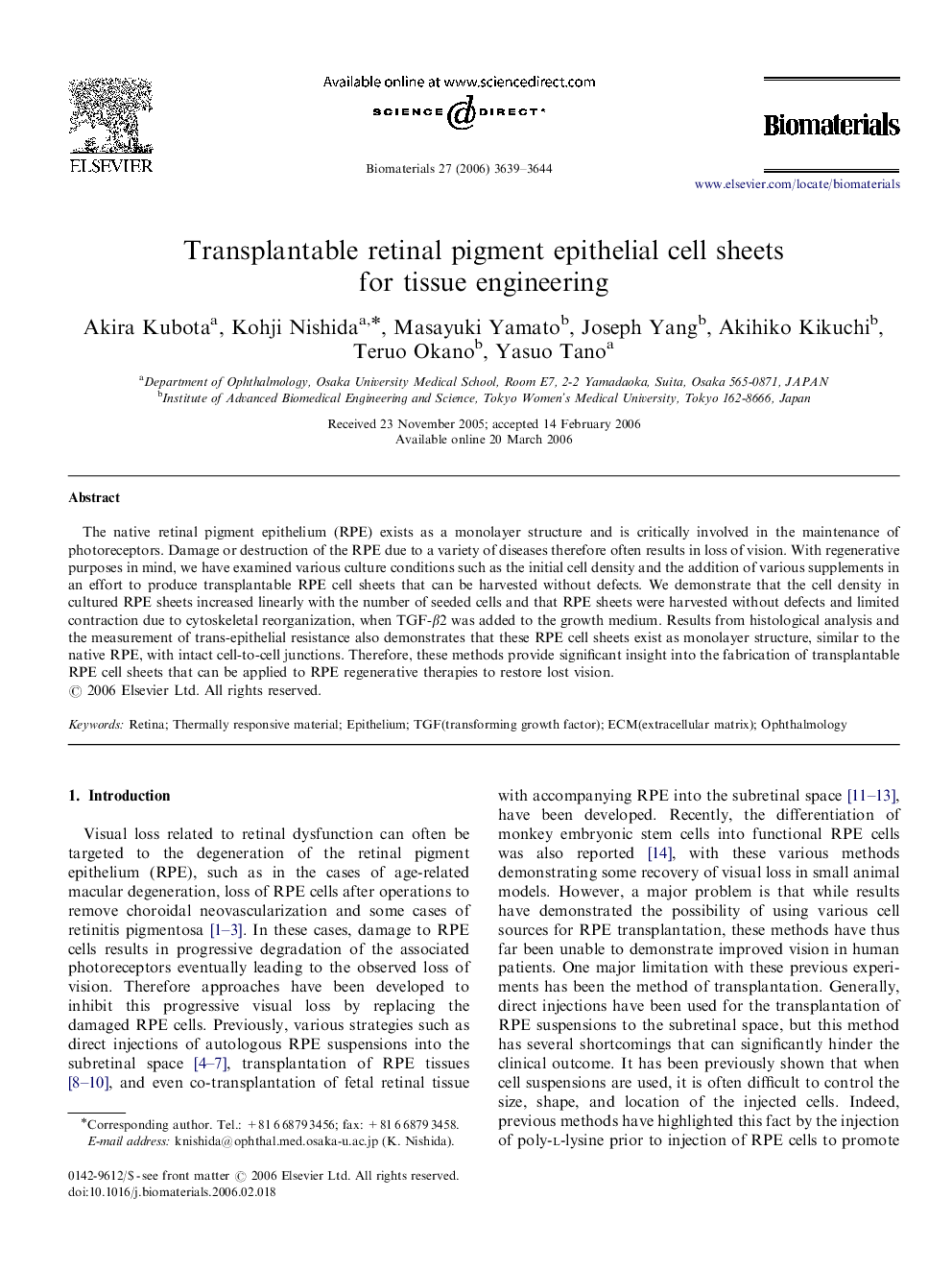| Article ID | Journal | Published Year | Pages | File Type |
|---|---|---|---|---|
| 12050 | Biomaterials | 2006 | 6 Pages |
The native retinal pigment epithelium (RPE) exists as a monolayer structure and is critically involved in the maintenance of photoreceptors. Damage or destruction of the RPE due to a variety of diseases therefore often results in loss of vision. With regenerative purposes in mind, we have examined various culture conditions such as the initial cell density and the addition of various supplements in an effort to produce transplantable RPE cell sheets that can be harvested without defects. We demonstrate that the cell density in cultured RPE sheets increased linearly with the number of seeded cells and that RPE sheets were harvested without defects and limited contraction due to cytoskeletal reorganization, when TGF-β2 was added to the growth medium. Results from histological analysis and the measurement of trans-epithelial resistance also demonstrates that these RPE cell sheets exist as monolayer structure, similar to the native RPE, with intact cell-to-cell junctions. Therefore, these methods provide significant insight into the fabrication of transplantable RPE cell sheets that can be applied to RPE regenerative therapies to restore lost vision.
